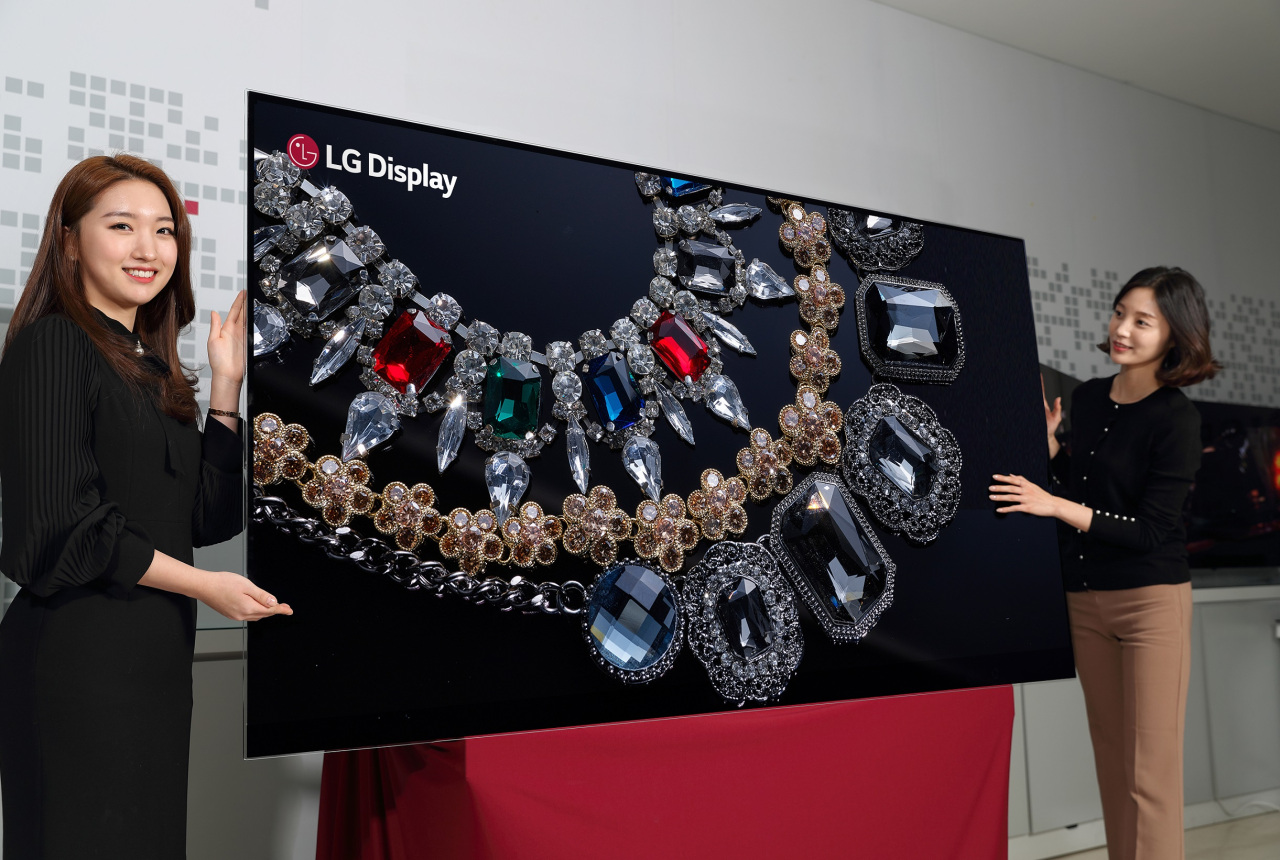LG Display announced Tuesday it has invested an additional 3 trillion won ($2.5 billion) in the 10.5-generation line for organic light-emitting diode panels at its P10 factory in a bid to expand the market presence of large-sized OLED screens.
The world’s biggest OLED panel maker will execute the investment with an aim to increase the monthly production capacity of the newest line located in Paju, Gyeonggi Province, to 45,000, starting from 2023.
The Gen 10.5 plant was built to manufacture large-sized OLED panels. It is scheduled to start production of 30,000 OLED panels that are 65 inches or larger from 2022.
 |
(LG Display) |
“The additional investment is aimed at accelerating the company’s focus on the TV business by ramping up the large-size panel production capacity,” a company official said. “As the OLED TV market is growing, the company is aggressively expanding production infrastructure.”
LG Display has constantly increased investments in the large-sized OLED panel production line. The company spent 1.84 trillion won in November 2015 and 2.8 trillion won in July 2017 to secure a monthly capacity of 30,000 panels.
The latest investment will also be spent on applying multi-model glass manufacturing technology that will help reduce production costs and improve productivity, according to the panel maker.
“The company’s increasing OLED production capacity will contribute to expanding the global OLED TV market,” the official said.
Including LG Electronics, a total of 15 TV manufacturers are selling OLED TVs.
According to IHS Markit, 2.9 million OLED TVs were sold globally last year. The total sales volume is forecast to reach 3.8 million this year and 10 million by 2022.
With the panel maker’s capacity expansion, the market researcher predicted the proportion of OLED TV sales would grow from 5.7 percent in 2018 to 10.4 percent in 2023.
Meanwhile, LG Display said it posted 5.35 trillion won in sales and an operating loss of 368.7 billion won in the second quarter of this year.
Its sales shrank 9 percent from the previous quarter and 5 percent from a year earlier, due to reduced demand from set makers, the company said.
Sales of TV panels accounted for 41 percent of the total, recording a percentage point increase from the previous quarter, owing to OLED TV sales.
By Song Su-hyun (
song@heraldcorp.com)




![[Today’s K-pop] Blackpink’s Jennie, Lisa invited to Coachella as solo acts](http://res.heraldm.com/phpwas/restmb_idxmake.php?idx=644&simg=/content/image/2024/11/21/20241121050099_0.jpg)



